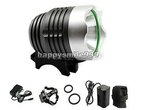ArminVanBuuren
Member level 3
It disappoints me that even in case of a single CREE LED & the lowest possible current (700 mA), it still has serious overheating issues. I would be interested in knowing how such a beast works, then:
**broken link removed**
Btw what happens when the single CREE is overheating? The current lowers itself on the lowest possible value 700 mA? Not less, even if the overheating is very serious? And then the lifespan of the LED decreases, or what actually happens?
**broken link removed**
Btw what happens when the single CREE is overheating? The current lowers itself on the lowest possible value 700 mA? Not less, even if the overheating is very serious? And then the lifespan of the LED decreases, or what actually happens?

